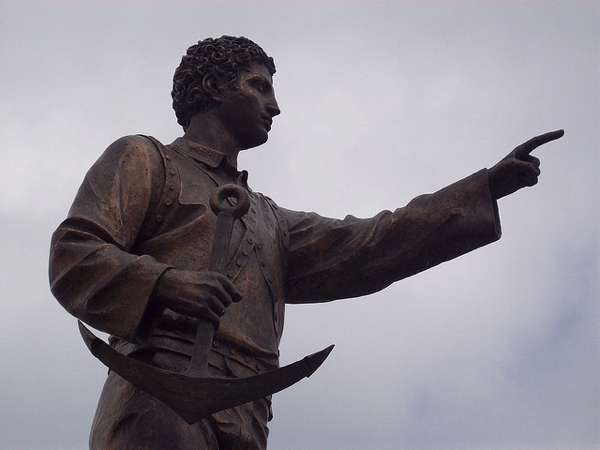USA – Greek Diaspora History
Theodoros Griego
Theodoros Griego - The First Greek American
The first ever recorded Greek American is Theodoros Griego, also known as Don Teodoro.
Theodoros Greigo and the Narváez Expedition
Theodoros Griego was born in the Aegean in Greece and later immigrated to Spain. His name in Spanish means “Theodore Greek” and it’s in Spain where he first became referred to as Don Teodoro. In Spain Theodoros Griego became an explorer and conquistador, joining the Narváez expedition in 1527.
The Narváez expedition was led by conquistador Panfilo de Narváez and consisted of a fleet of five ships with 600 men, with the objective of conquering the land from today’s Florida in the U.S. and westward. The 600 men, including Theodoros Griego, set sail from the Spanish port of Sanlucar de Barrameda on June 17, 1527.
The Greek Diaspora reaches the U.S.
The expedition stopped in Santo Domingo and Cuba before arriving near what is now known as the Jungle Prada Site in St. Petersburg, Florida on April 14, 1528 with five ships and 400 men. This made Theodoros Griego the first known Greek to set foot in the U.S.

The initial interaction with American natives however was not peaceful. Panfilo de Narváez claimed the area as the property of the Spanish Crown. A resulting fight broke out with the natives and the expedition cut off the nose of a native Indian chief, hacked the chief’s mother to death and fed parts of her body to Narváez’s pet greyhounds.
After further communications with Native Americans, the expedition heard rumours that a city named Apalachen was full of food and gold. Narváez and his men explored Florida and marched northwards in search of the famed city and its gold.
At one point, the expedition was attacked while trapped in the mountains. The attack, amongst other factors left few members of the expedition remaining with their lives. It was in this moment that Theodoros Greigo earned his reputation as “The Cunning Greek” as he conjured up a plan to build five rafts using pine resin, leather, and wood. Even though there was only one carpenter amongst the remaining expedition, under Theodoros Greigo’s guidance, they built five boats approx. 10m long (30 to 32 feet) in just over six weeks. The Spanish conquistadors managed to escape, sailing the makeshift boats through the tributaries of Mississippi.
After a month of sailing aimlessly, they encountered a group of natives who were willing to offer them food and water. Theodoros Griego and one other conquistador went ashore with the natives to collect supplies. The natives returned with supplies but with the two conquistadors nowhere to be seen.
The Remaining Conquistadors
Some conquistadors continued searching for Theodoros Griego, some became enslaved by native tribes, and others perished at the hands of natives or the harsh environmental factors. In the end, four conquistadors survived and managed to reach Mexico City. From there, the conquistadors sailed back to Europe, returning to Spain in 1537.
What came to be of Theodoros Griego?
Some conquistadors believed that Theodoros Griego befriended the natives so that he would get all the gold for himself.
Spanish historian – Gonzalo Valdez traveled to the area where the Greek had disappeared in 1540. The natives told him that two Christians had lived with them but at some stage they killed them both.
Other soldiers claim to have encountered natives who said that they remembered the Greek and produced a dagger that had belonged to him. In this account, the natives also claimed to have killed Theodoros Griego.
How the Memory of the First Greek American was Preserved
One of the four surviving conquistadors, Álvar Núñez Cabeza de Vaca wrote a detailed description of the expedition upon his return. This account was published in 1542 and again, revised, in 1555. It was later translated by Wake Forest University history professor emeritus Cyclone Covey. This is the main source for most modern accounts, including this article, of Theodoros Griego and the Narváez expedition.
If these accounts of Theodoros Griego living with native tribes are accurate, then this man could very well be the very first Greek American, laying the foundations for one of the largest Greek diasporas on the planet.
Thanks to the Panhellenic Federation of Florida, a 900-pound bronze statue of Theodoros Griego is displayed on a tall, granite pedestal in Clearwater Beach, Florida (near the Visitor’s Center at Pier 60 Park). Part of the statue is a plaque that reads “The history of Greeks (Hellenes) in America starts from here”.

Do you have a connection to the Greek Diaspora in the U.S.? Trace your ancestry to find out. There are a number of DNA tests available but the most common and most trusted of them all is Ancestry.com
